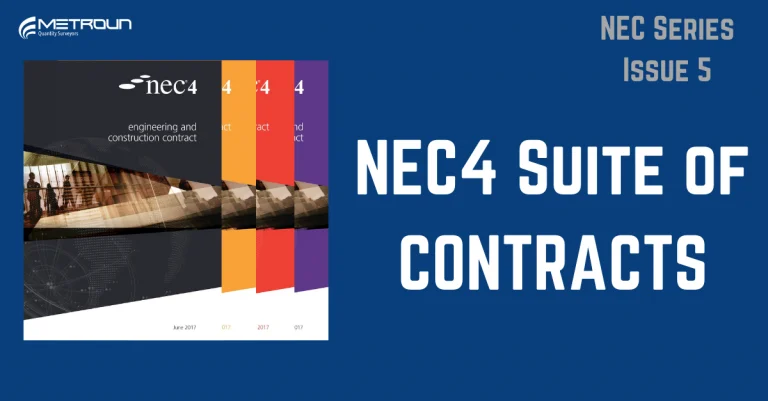The New Engineering Contract (NEC) is one of the most widely recognised suites of standard contracts in the UK construction industry. First introduced in 1993, it has evolved through several editions:
- NEC (1993)
- NEC2 (1995)
- NEC3 (2005)
- NEC4 (2017)
At the time of writing, most projects are still procured under NEC3, though it’s anticipated that the industry will continue to move towards NEC4 in the coming years. Lets explore NEC4 contracts.
📂 Looking for tools? Check out our tailored NEC4 Contracts Excel templates here
The NEC Contract Suite
The NEC suite offers a broad range of contract forms to suit different project types, relationships, and levels of risk. Below, we break down the main options:
Engineering and Construction Contract (ECC)
The most commonly used NEC contract, setting out the framework between a client and main contractor.
Within the ECC, the Employer selects one of six options to determine how the works will be priced:
- Option A: Priced contract with activity schedule
- Option B: Priced contract with bill of quantities
- Option C: Target contract with activity schedule
- Option D: Target contract with bill of quantities
- Option E: Cost-reimbursable contract
- Option F: Management contract
👉 You can learn more about the NEC options here
Engineering and Construction Subcontract (ECS)
A back-to-back version of the ECC, used when the main contractor subcontracts part of the works. The structure and clauses mirror the ECC but with adjusted terminology and timescales.
Engineering and Construction Short Contract (ECSC)
A simplified version of the ECC, intended for low-risk projects. Like the ECC, it sets out terms between Employer and Contractor but in a more streamlined format.
Engineering and Construction Short Subcontract (ECSS)
The subcontract equivalent of the ECSC. This applies when a contractor subcontracts low-risk works.
Professional Services Contract (PSC)
Designed for those providing professional services, such as design consultants. It ensures that service providers follow NEC procedures and risk allocations.
Professional Services Short Contract (PSSC)
A lighter version of the PSC, suitable for less complex assignments, such as small teams providing project administration.
Framework Contract (FC)
An umbrella agreement spanning a fixed period of time. Work packages are let under the framework, with parties following both:
- The overarching framework conditions.
- The clauses of the specific NEC contract applied to each package.
Term Service Contract (TSC)
Used for operation and maintenance rather than new build. For example, maintaining street lighting or other infrastructure assets.
- A short form version exists for low-risk services.
Supply Contract / Short Supply Contract (SC/SSC)
Focused on the supply of goods or equipment:
- Supply Contract: For major, project-specific manufactured items.
- Short Supply Contract: For general supplies.
Neither contract covers site works.
Dispute Resolution Services Contract (DRSC)
Formerly the Adjudicator’s Contract, this is used when disputes arise. It sets out the rules and responsibilities of the Adjudicator during proceedings.
Design Build and Operate (DBO)
A whole-life delivery contract, combining design, construction, and maintenance under one party’s responsibility.
Alliance Contract (ALC)
A highly collaborative form of contract designed for large, complex projects. It allows multiple parties to work together under one contract, sharing risks and rewards while pursuing the client’s objectives.
Final Thoughts
The NEC contract suite is one of the most versatile sets of standard forms in construction, covering everything from short-term, low-risk projects to long-term, complex, multi-party alliances.
By choosing the right form of NEC contract, clients and contractors can ensure a fair balance of risk, clearer communication, and more collaborative project delivery.
Watch our video on NEC4 Contracts here:











